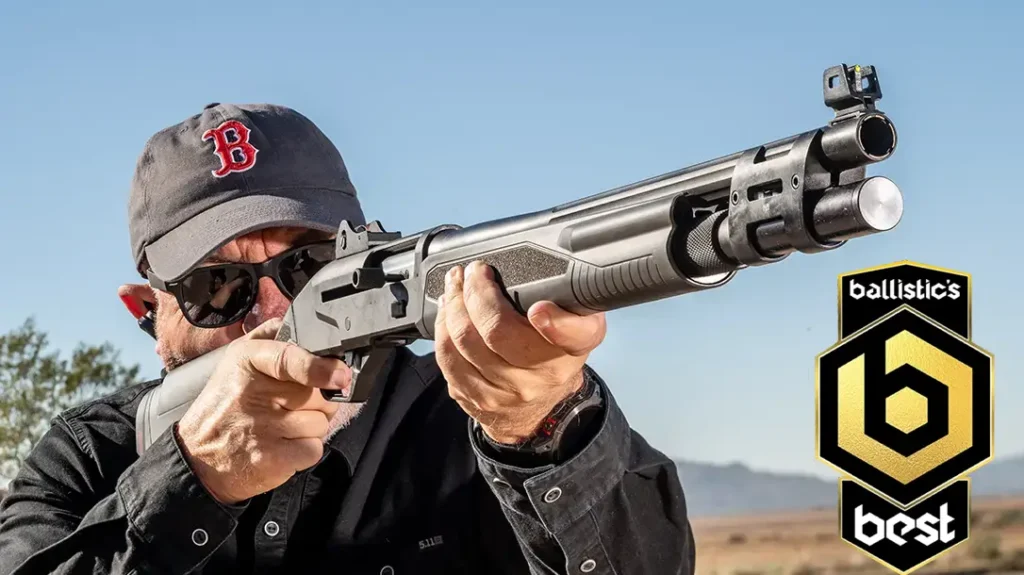The Sub Compact Weapon is dead, long live the Sub Compact Weapon. Weeks after canceling its search for a 9mm subgun, U.S. Army Contracting Command-New Jersey has issued a new Prototype Opportunity Notice (PON) for a Sub Compact Weapon system.
Program Objective
The notice lays out the objective of the Sub Compact Weapon program thusly:
Advertisement — Continue Reading Below
United States military operations take place worldwide and in all types of terrains as well as under every environmental condition. The Secretary of the Army and/or the Chief of Staff approves senior commanders and key personnel as High Risk Personnel (HRP). HRPs are authorized a Personal Security Detail (PSD), which are assigned to guard against outlined threats. To address this operational need, PSD military personnel require weapons with greater lethality than pistols that are more concealable than rifles. The ultimate objective of this program is to acquire a highly concealable Sub Compact Weapon (SCW) system capable of engaging threat personnel with a high volume of lethal force while accurately firing at close range with minimal collateral damage.
Award
With this PON, the Army will award up to six Prototype Other Transaction Agreements (OTAs). If selected, companies will deliver 15 functional weapons, in addition to slings and manuals; 40 – 20 round magazines and 80 – 30 round magazines; 5 cleaning kits; 3 suppressors; 2 specialized tool kits (if required for assembly/disassembly); and spare parts, 30 days after the award.
After an evaluation, a follow-up award will then be given to one company for up to 350 Sub Compact Weapon systems, which could include an option for added quantities of up to 1,000 Sub Compact Weapon systems that “may be exercised in quantities no greater than 350 SCW systems.”
Advertisement — Continue Reading Below
Sub Compact Weapon System Specs
The last time the Army went looking for a Sub Compact Weapon, it was vague in terms of the specs it was looking for. This time, however, it’s offering up more specifics. The PON says the system should include the following:
- Compatibility: Capable of attaching accessories / enablers.
- Ammunition: 9mm (9x19mm North Atlantic Treaty Organization (NATO) and qualified Sporting Arms and Ammunition Manufacturers’ Institute (SAAMI) commercial ammunition). Must perform optimally with 147 grain 9mm ammunition. Must be able to fire marking/training round.
- Firing Mode: Semi and full automatic selectable.
- Ambidextrous Controls: All controls on both sides of weapon.
- Safety: External safety control that prohibits firing.
- Magazine Capacity: Shall include 20 round and 30 round magazines.
- Magazine Loading: Magazines shall load from the bottom of the weapon and forward from the trigger.
- Weapon color: Entire exterior surface of the weapon system to include all components shall be non-reflective black.
- Weapon Length without suppressor: Weapon shall be less than 15 inches overall in collapsed position.
- Weight – Weapon Only, unloaded with slings: Weapon shall be less than 7 pounds.
- Buttstock: Telescopically collapsible.
- Barrel Length without suppressor: Shall be no longer than 5.5 inches.
- Operator Level Maintenance: Shall be maintainable at the operator level without the use of special tools.
- Delivery Schedule: Delivery of 15 SCW systems within 30 calendar days after OTA award.
Testing
The notice says the Sub Compact Weapon should be able to complete the following 10 tests. If the prototype fails the rough handling test, testing will cease for that prototype and that system will be eliminated from the competition.
- Rough Handling: Withstand 5 foot drop in 6 orientations without discharging a round in safe or fire mode.
- Accuracy/Dispersion (Semi- Automatic): Four out of five consecutive shots within or cutting the edge of a four-inch diameter circle at 35 meters.
- Acoustic: 150 decibels or less unsuppressed measured at a distance of 3 feet perpendicular to the bore.
- Rate of Fire: 60 rounds per minute for 5 minutes without cook-off.
- Reliability: 1 Class I/II stoppage per 1,000 rounds. Class I can be cleared within 10 seconds. Class II can be cleared without special tools.
- High Temperature: No deteriorating effects on key components of the weapon system (bolt, receiver, barrel, etc.) or difficulties in loading or operating the weapon system when firing 10 x 50 round cycles at 160 Degrees Fahrenheit.
- Low Temperature: No deteriorating effects on key components of the weapon system (bolt, receiver, barrel, etc.) or difficulties in loading or operating the weapon system when firing 10 x 50 round cycles at -50 Degrees Fahrenheit.
- Recoil: Less than 4 foot pounds.
- Toxic Fumes: Within OSHA permissible exposure limits.
- User Evaluation- Soldier touchpoint (Weapon Comfort, Controllability, Concealability, Maintainability, Recoil, Trigger, Ease of Magazine Change, Sight-Ability and Access to Controls during a series of operationally realistic engagements): Measuring performance against the shooter in the loop accuracy requirement in the draft CDD and Evaluating risk of user acceptance based on usability in operationally relevant scenarios.
All testing will be conducted at the U.S. Army Aberdeen Test Center in Aberdeen, Md.
Advertisement — Continue Reading Below
Response
Responses to this PON are due no later than Aug. 9, 2018, at 11:59 p.m. EST.























